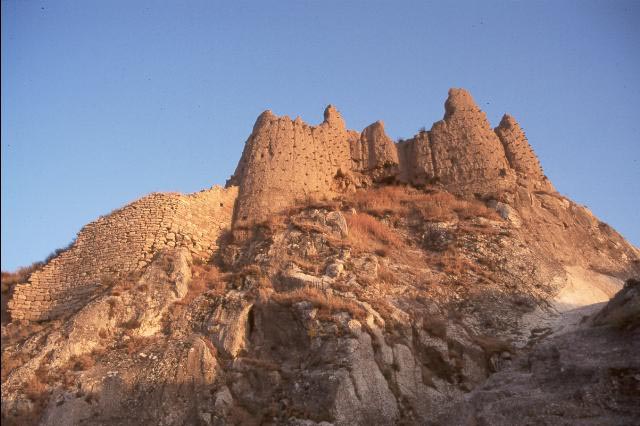|
Day
10 Wednesday
, Aug 08 by Charlie
Dell dellb@grandforks.AF.mil
SUNRISE AT MOUNT ARARAT
SUN SET AT URARTU SUN GODDESS TEMPLE AT LAKE
VAN
We were up before 5:00 AM so that we could be having our tea on
the balcony as the sun rose over spectacular Mt. Ararat.
Meli had let us down – the large black mosquitoes that she
assured us were in the area never appeared.
We had a blissful night complete with open windows in one of the
better hotels of the tour.
Some of the group opted to catch a few more zzz’s, while others
helped give the Petronas Expedition Team Malaysia, a cross-country
4-wheel and motorcycle team following the ancient Silk Road, a
whole-hearted send-off to their next destination in Iran.
The place where Noah’s Ark came to rest was our next stop as we
continued through the same muted gray, treeless, and bleak landscape
punctuated by the occasional oasis.
Villages continue to be stone walls with concrete homes, abundant
dung piles and haystacks.
Nuhungemisi is the village at 7000 feet 20 miles south of Mt.
Ararat that is the protectorate of the remains of the ark.
In 1959 a pilot in the Turkish Air Force on a NATO-mapping
mission photographed the unusual ship-shaped, 500-foot long object.
Several visits and excavations to the site have been done.
A scientist in one group said that nothing in nature could create
such a symmetrical shape when one survey revealed no sign that the
object was manmade.
Whether you believe or not, there are some arguments:
Trainloads of petrified wood are present in
the formation, but there is little to be found in the rest of eastern Turkey.
Several anchor stones many times larger than
similar stones found in the Mediterranean
Sea were found near the site. All had 8 crosses carved on them, which are thought to
represent the 8 survivors of the flood –
Noah, his wife, their 3 sons, and the sons’ wives.
The area that we are in is a very militarized
region. Meli explained to
us that the military serves three purposes in eastern Turkey today.
They are social support by being a part of the community to build
roads, haul water, bring electricity, perform circumcisions, open
weaving centers and organize festivals.
Secondly, they prevent the recurrence of terrorism by being
present as soldiers. And
lastly, they aid in the suppression of smuggling human beings across the
border.
We stopped at the post office at the Iranian
border to mail our postcards. I
feel certain the attendant must have sold a 3-month quota of stamps to
us as the group went wild over some of the gorgeous designs – scarves,
pretty women, birds, and flowers.
Our last pre-lunch site was Meteor Cukura,
quite a deep meteor crater produced in the 1920’s and overlooked by
the last Turkish military outpost.
Lunch was an excellent grilled meat with accompaniments back at
the Sim-Er Otel in Dogubayazit.
Ishak Paşa Palace (built 1680-1780)
overlooking Mt. Ararat is a huge complex with baroque, western, and
Iranian influence. Russians
who also took the gold gate of the palace to the Hermitage destroyed the
village nearby in an attack. The
building was used for private accommodation, storage for times of
danger, and to receive guests.
We had tea by a picturesque waterfall,
Muradiye Selalesi, and suddenly we were out of the arid and rocky
mountains and into luscious fertile farmland.
Off in the distance we saw a huge body of water, Lake Van, with a
perimeter of almost 200 miles. Continuing
into the city of Van, fields alternated between grazed and plowed.To cap off our day, we climbed to the 300 year
old Urartian fortress overlooking the lake and toasted the sunset on the
altar of the Sun Goddess.
After our quick check-in at Otel Urartu and
buffet supper, we headed to our uncomfortably warm and noisy rooms.
Back
to Melitour home page
 next page
next page
|

